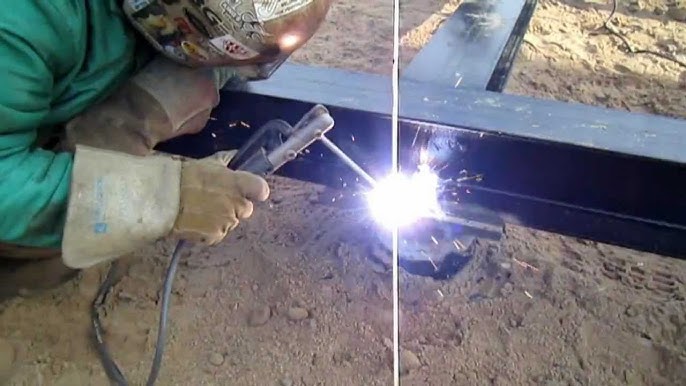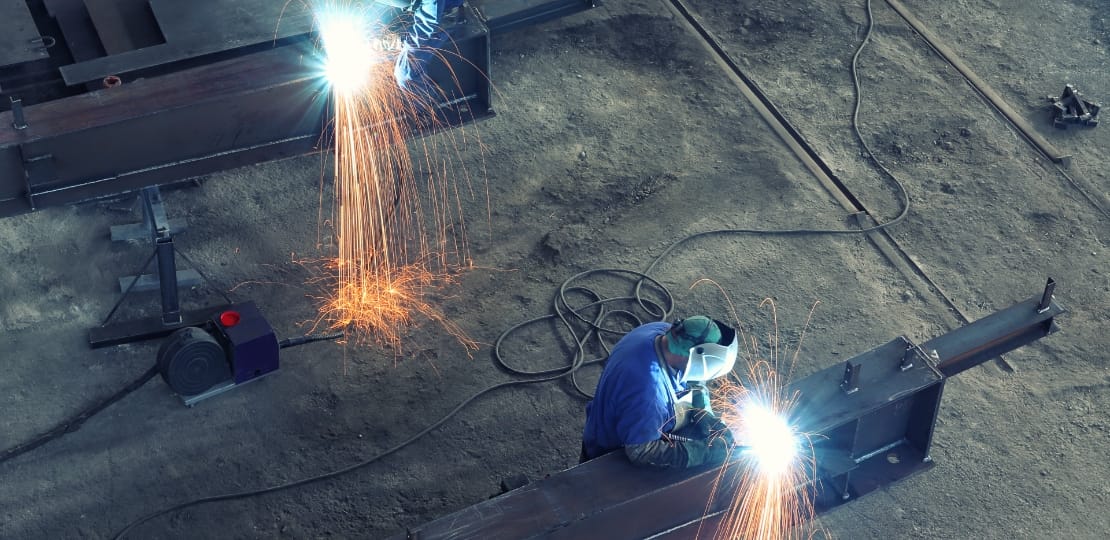Everything about Welding: Secret Insights Into Techniques and Best Practices for Success
Welding incorporates a selection of strategies, each suited for specific products and applications. Recognizing these techniques, such as GMAW, SMAW, and TIG, is essential for attaining ideal results. In addition, the best devices and safety practices can not be ignored. As prep work and repairing play crucial roles in the welding process, understanding these elements can greatly boost the top quality of the end product. What are the vital elements that guarantee an effective weld?
Understanding Various Welding Techniques
Welding methods include a selection of techniques, each suited to particular applications and products. Among one of the most usual techniques are Gas Metal Arc Welding (GMAW), Protected Steel Arc Welding (SMAW), and Tungsten Inert Gas Welding (TIG) GMAW, likewise called MIG welding, is popular for its rate and versatility, making it ideal for thin materials. SMAW, or stick welding, is favored for its simpleness and efficiency in outside environments, particularly with thicker steels. TIG welding provides precision and control, making it ideal for intricate job and non-ferrous steels (Belgrade Fabrication). Each strategy has its distinct advantages and considerations, permitting welders to select the most effective approach based upon the task's requirements, product kind, and preferred results. Recognizing these strategies is vital for successful welding
Vital Welding Equipment and Devices
While different welding strategies require certain abilities, the right devices and tools are equally crucial for attaining quality results. Vital welding tools consists of welding machines, which vary relying on the strategy-- such as MIG, TIG, or stick welding. Protective equipment, including aprons, helmets, and gloves, assurances safety and comfort during the procedure. In addition, clamps and components help safeguard materials in position, making sure precision in welds. Consumables like welding poles, wire, and protecting gas are likewise important elements that affect the top quality of the weld. Furthermore, devices such as cutters and mills facilitate surface area prep work and post-weld ending up, adding to a professional end result. Spending in top quality equipment ultimately enhances the performance and efficiency of welding jobs.
Security Practices in Welding
Appropriate safety and security practices are essential in the welding market to secure workers from possible threats. Welders should put on suitable personal safety devices (PPE), including headgears with proper shading, gloves, and flame-resistant garments. Appropriate air flow is crucial to minimize direct exposure to unsafe fumes and gases created during the welding process. Furthermore, workers need to be trained in the proper handling of welding devices to avoid crashes. Fire security procedures, such as maintaining combustible materials far from the welding location and having fire extinguishers conveniently offered, are required. Normal evaluations of tools and work areas can aid identify potential dangers before they cause crashes. By sticking to these safety techniques, welders can create a safer working setting and decrease dangers associated with their profession.
Readying Materials for Welding
Preparing products for welding is an essential action that significantly influences the high quality and integrity of the end product (Montana Mobile Welding and Repair Welding). Proper preparation involves cleaning the surfaces to remove pollutants such as oil, rust, and dirt, which can compromise the weld. Strategies such as grinding, fining sand, or making use of solvents are commonly employed to accomplish a tidy surface area. Furthermore, ensuring that the products fit together comfortably is vital; voids can result in weak welds. It's likewise important to think about the placement and positioning of the parts, as this will influence the simplicity of welding and the last outcome. Choosing the appropriate filler product and guaranteeing compatibility with the base steels is crucial for accomplishing solid, long lasting welds.
Tips for Achieving High-Quality Welds
Achieving premium welds calls for attention to information and adherence to finest techniques throughout the welding procedure. Appropriate joint prep work is crucial, guaranteeing surfaces are tidy and complimentary from impurities. Picking the ideal filler product and welding strategy based upon the base steels is important for ideal bonding. Maintaining regular traveling speed and angle while welding can stop defects and promote harmony. Additionally, controlling warm input is crucial; extreme heat can cause warping and damaged joints. Consistently examining the welds throughout the process permits instant changes if needed. Employing proper post-weld therapies, such as cleansing and tension relief, can enhance the toughness and stability of the weld, eventually ensuring an effective end result.
Troubleshooting Typical Welding Issues
Welding frequently presents obstacles that can influence the top quality and honesty of the end product. Common problems such as porosity, irregular weld beads, and getting too hot can develop, each requiring particular repairing strategies. Discover More Here Comprehending these problems is important for welders to boost their abilities and achieve perfect outcomes.
Porosity Troubles Discussed
Although porosity can commonly be neglected, it stays an essential problem in welding that can endanger the stability of a completed product. Porosity describes the existence of little gas pockets within the weld bead, which can lead and deteriorate the joint to early failing. This issue usually develops from contaminants, moisture, or improper securing gas coverage throughout the welding process. To minimize porosity, welders ought to validate that the base materials are clean and dry, use suitable protecting gases, and maintain constant welding specifications. On a regular basis checking the equipment and atmosphere can additionally aid identify prospective issues before they materialize in the weld. Attending to porosity successfully is essential for attaining strong, sturdy welds that fulfill top quality requirements.

Irregular Weld Beans
Inconsistent weld beads can considerably influence the top quality and stamina of an ended up item. Different variables add to this problem, consisting of incorrect traveling speed, wrong amperage setups, and inconsistent electrode angles. When the welder relocates too swiftly, a bead might appear narrow and do not have penetration, while moving as well slowly can create excessive accumulation. In addition, making use of the wrong amperage can lead to either undercutting or excessive spatter, both of which compromise weld integrity. The welder's strategy, such as inconsistent lantern movement, can also bring about uneven grain look. To reduce these troubles, welders ought to concentrate on preserving stable, regulated activities visit this site and making sure correct equipment setups to attain harmony in their welds. Consistency is vital to achieving dependable and solid welds.
Overheating and Warping Issues
Excessive warmth throughout the welding process can cause significant getting too hot and warping problems, impacting the structural integrity of the workpiece. These troubles frequently show up as distortion, which can compromise alignment and fit-up, making additional setting up challenging. Aspects adding to overheating consist of the choice of welding parameters, such as voltage and take a trip rate, in addition to the sort of product being bonded. To minimize these problems, welders need to keep regular traveling speed and proper warm input while keeping an eye on the work surface temperature. In addition, preheating or post-weld warmth treatment can help alleviate tensions brought on by fast cooling - Montana Mobile Welding and Repair Belgrade Welding. Routine inspection and adherence to best techniques are necessary in preventing getting too hot and making certain the longevity and integrity of welded frameworks
Frequently Asked Inquiries
What Are the Profession Opportunities in the Welding Industry?
The welding market uses varied career opportunities, including placements as welders, instructors, examiners, and designers. Professionals can operate in manufacturing, construction, aerospace, and automotive markets, gaining from strong demand and competitive salaries in numerous roles.
How Can I Enhance My Welding Rate Without Compromising Top Quality?
To boost welding speed without sacrificing quality, one ought to practice reliable strategies, keep tools, enhance settings, and improve hand-eye coordination. Normal training and looking for responses can additionally substantially contribute to achieving much faster, top notch welds.
What Qualifications Are Offered for Welders?
Various accreditations exist for welders, consisting of those from the American Welding Culture (AWS), the National Facility for Building Education and Research (NCCER), and different industry-specific companies. These credentials boost employability and show skill proficiency.
Exactly How Does Welding Affect the Features of Metals?
Welding affects the properties of metals by modifying their microstructure, which can cause adjustments in stamina, firmness, and ductility. Warmth input my website and cooling prices throughout the procedure significantly influence these product attributes.
Can I Weld Dissimilar Metals With Each Other?
